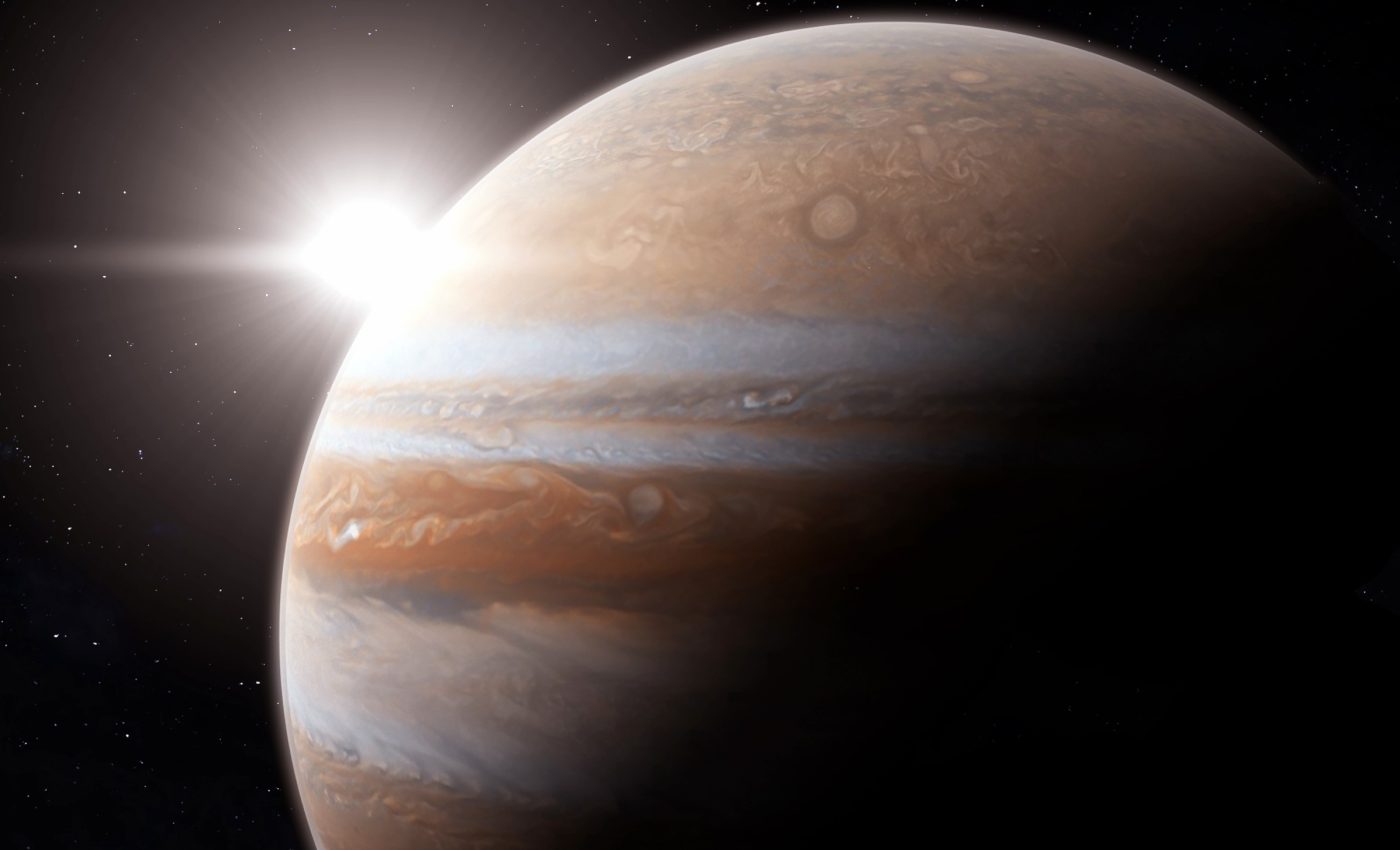
Jupiter’s chaotic birth created a safe zone for Earth to form
When our solar system was young, a swirling disk of gas and dust surrounded the Sun. Within this turbulent nursery, the giant planet Jupiter grew and transformed everything around it.
New research from Rice University shows that Jupiter’s early rise did more than make it the largest planet – it reshaped the very architecture of our cosmic neighborhood.
Jupiter’s early influence
The study by André Izidoro and Baibhav Srivastava reveals that Jupiter’s rapid growth disturbed the surrounding disk.
Using advanced hydrodynamic simulations, the researchers found that the planet’s immense gravity carved out gaps and created pressure ridges that acted as dust traps. These structures collected particles into dense rings, halting their inward drift toward the sun.
This disruption also sped up gas depletion in the inner solar system, isolating the material that would form Earth and its neighbors.
Without Jupiter’s interference, most inner planets might have spiraled into the sun. Instead, they remained clustered around one astronomical unit – exactly where they are today.
“Jupiter didn’t just become the biggest planet – it set the architecture for the whole inner solar system,” said Izidoro. “Without it, we might not have Earth as we know it.”
Jupiter delayed the birth of meteorites
The researchers found that Jupiter’s formation created conditions for a second generation of planetesimals – the rocky seeds of planets – to form millions of years after the first.
This late wave of formation aligns with the ages of chondrites, the primitive meteorites that hold chemical clues to the early solar system.
“Chondrites are like time capsules from the dawn of the solar system,” said Izidoro. “They have fallen to Earth over billions of years, where scientists collect and study them to unlock clues about our cosmic origins.”
“The mystery has always been: Why did some of these meteorites form so late, 2 to 3 million years after the first solids? Our results show that Jupiter itself created the conditions for their delayed birth.”
How rings and gaps formed
The simulations showed that Jupiter opened a deep gap in the gas disk, producing multiple pressure bumps between 0.3 and 5 astronomical units. These bumps became long-lived dust traps that gave rise to new planetesimal rings inside Jupiter’s orbit.
Srivastava explained how this helped preserve the isotopic differences between meteorites. “Our model ties together two things that didn’t seem to fit before – the isotopic fingerprints in meteorites, which come in two flavors, and the dynamics of planet formation,” he said.
“Jupiter grew early, opened a gap in the gas disk, and that process protected the separation between inner and outer solar system material, preserving their distinct isotopic signatures. It also created new regions where planetesimals could form much later.”
Jupiter kept the solar system stable
The study also offers a solution to another puzzle – why the inner planets didn’t drift toward the sun. Jupiter’s influence rapidly depleted the gas in the inner disk, limiting the migration of growing planetary embryos.
This mechanism explains how Mars, Earth, and Venus remained stable in their current orbits instead of being pulled inward.
In models without Jupiter, the simulations showed that planets would have migrated too close to the sun. But when Jupiter formed early – within the first two million years – the pressure bumps it created acted as barriers, slowing or reversing migration.
Similar worlds seen today
Observations from the Atacama Large Millimeter/submillimeter Array (ALMA) in Chile reveal young star systems surrounded by ring-and-gap patterns – just like those produced in these simulations.
“Looking at those young disks, we see the beginning of giant planets forming and reshaping their birth environment,” said Izidoro.
“Our own solar system was no different. Jupiter’s early growth left a signature we can still read today, locked inside meteorites that fall to Earth.”
Jupiter’s lasting solar influence
The study suggests that Jupiter began forming within 1.5 to 2 million years after the solar system’s birth. Its early growth not only preserved the isotopic divide between inner and outer regions but also triggered the late creation of chondrites.
The simulations imply that multiple generations of planetesimals formed in distinct rings, explaining the diverse chemistry of meteorites found today.
By combining cosmochemistry, planetary dynamics, and hydrodynamic modeling, Izidoro and Srivastava bridged a long-standing gap in our understanding of solar system evolution.
Their work paints Jupiter not merely as a planet, but as the great sculptor of the solar system’s birth environment – a cosmic architect whose handiwork endures in the stones that still fall from the sky.
The research was supported by the National Science Foundation (NSF) and Rice’s Center for Research Computing.
The study is published in the journal Science Advances.
—–
Like what you read? Subscribe to our newsletter for engaging articles, exclusive content, and the latest updates.
Check us out on EarthSnap, a free app brought to you by Eric Ralls and Earth.com.
—–













